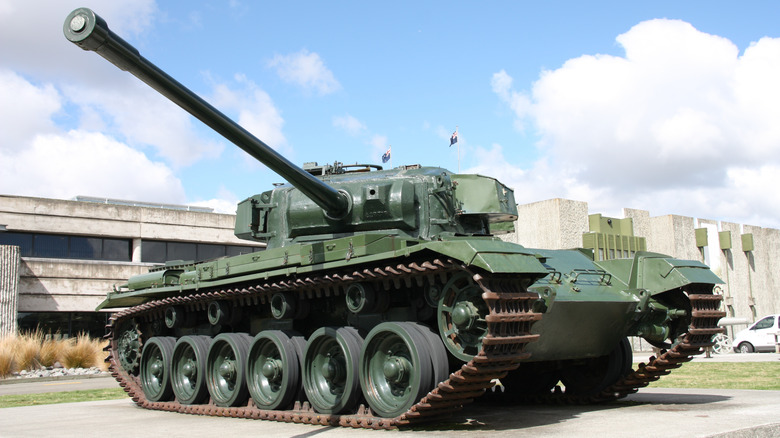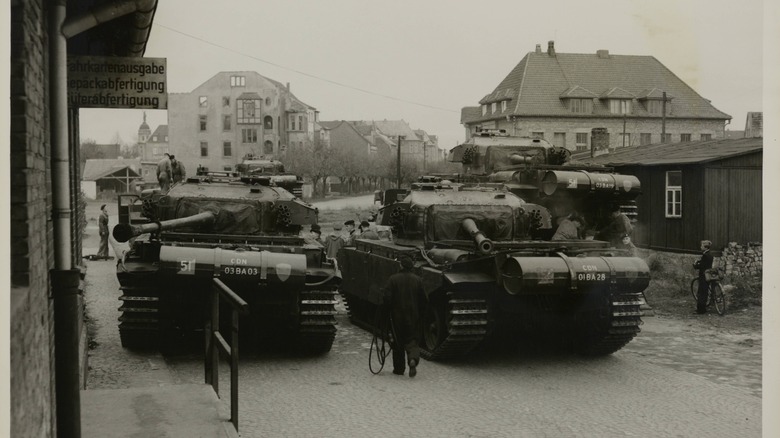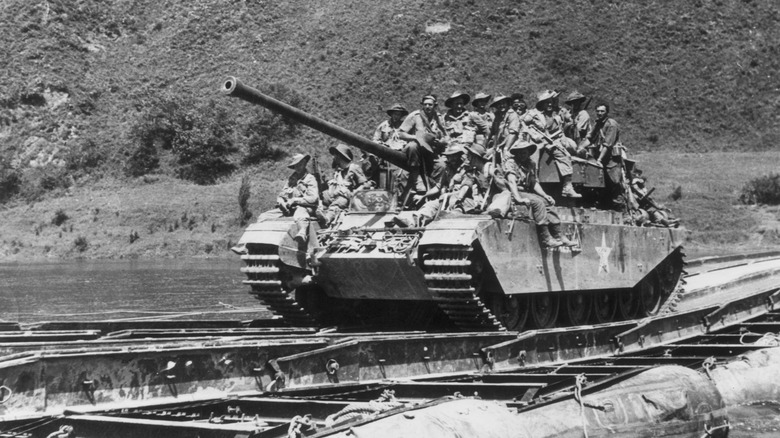Here's What Made The Centurion One Of The Most Important Tanks In British AFV History
The origin story of the Centurion – one of Britain's most important tanks and perhaps one of the most influential tank designs ever– goes all the way back to the Second World War.
Previously, England's "Cruiser" tanks (i.e., the Crusader) were quick and agile but too lightly armored to take on Germany's all-mighty Tiger tanks directly. Conversely, infantry support AFVs like the Churchill bore much thicker armor but were far too slow and easily outpaced by their German contemporaries.
Using strategies and concepts gleaned from their engagements in the North African deserts, the British Army began developing the Centurion, which ironically began life as a Cruiser, as a means to tame the Tiger. During the development process, however, it morphed into something altogether different.
This "Universal Tank" took the best of the Cruiser class, combined it with the best of the Churchills, and evolved into one of the first-ever Main Battle Tanks (MBT), the very design now used worldwide by most countries, including the U.S. Army's Abrams Main Battle Tank.
Before the MBT, tanks were divided into light, medium, and heavy designations. This new blueprint, however, flipped the script that made the Centurion a true multipurpose workhorse that could just as easily blast away at enemy tanks as it could support troops on foot and everything in between, such as penetrating enemies' defensive lines or quickly capitalizing on the opening.
The Centurion made a mighty fine Main Battle Tank
The first version of the A.41 (the Mark I) had a three-inch (76 mm) sloped armored glacis, making it more combat effective than the Cromwell and Comet and even the Churchill, which had much thicker armor.
The plan was to power this new MBT (which initially was to weigh 40 tons) with a modified version of the Rolls Royce Meteor engine because it was one that military mechanics were already acquainted with and was easy to maintain as it had powered the British Cromwell and Comet tanks. Several modifications were made to the 27-liter V12 that made it both smaller and easier to build, including removing the supercharger and lowering horsepower to 600. Still, it had a top speed of 25 mph.
Twenty of the Mark I's were ordered, each with a different array of armaments. For instance, 15 were equipped with Britain's infamous 17-pounder (76.2mm) anti-tank gun, while five had the new QF 77 mm (3.03 inch) gun. Some only had a 20 mm Polsten gun, while others had it and a Besa machine gun. The tanks fitted with the QF 77 had a hull machine gun that the driver could operate remotely.
Unfortunately, the prototype for the Centurion didn't appear until April 1945 (weeks before Germany surrendered), and the first units weren't ready to fight until June 1945. Thus, ironically, the Centurion never actually encountered the Nazi war machine during WWII.
It could take a licking and keep on ticking
The Centurion had 13 different versions and several unique variants during its long life. Generally speaking, it had a 4-person crew consisting of a commander, gunner, loader, and driver. Subsequent versions had upgraded armor, firepower, and equipment. For instance, the Mark 3 was equipped with the 3.3 inch (84mm) Ordnance QF 20-pound gun that enhanced accuracy through a newly designed automatic stabilization system.
Then there's this incredible claim to fame — according to The Engineer, it's the only tank to withstand a nuclear blast. In 1953, a Centurion was parked with the engine running 500 yards away from where a 9.1 kiloton bomb was dropped. The ensuing explosion moved the tank five feet. The engine ran out of gas during the test, so they refueled it and literally drove away. After minor repairs, it was put back into action and lasted another 23 years.
In 1952, the U.S. purchased 500 for use by NATO nations. This new MBT fought in the Korean, Vietnam, and Gulf wars. It was also used during the Yom Kippur War in 1973, which not only included one of the greatest tank battles in history but also one of the most intense dogfights in aerial combat history.
It was so well-designed that it was used by 14 nations, including Austria, India, Israel, Sweden, Switzerland, and up until as recently as 2017 in the case of South Africa's Olifant. Some 4,423 Centurions were built between 1946 and 1962, and the British Army replaced them with the heavier 60-ton Chieftain in the late 1960s.


